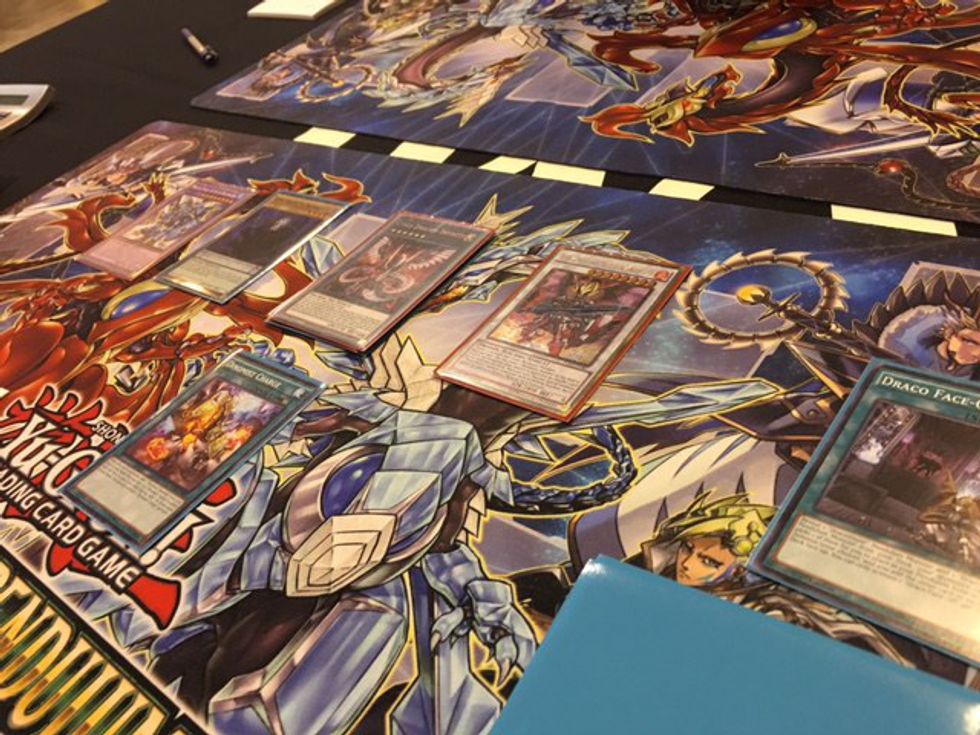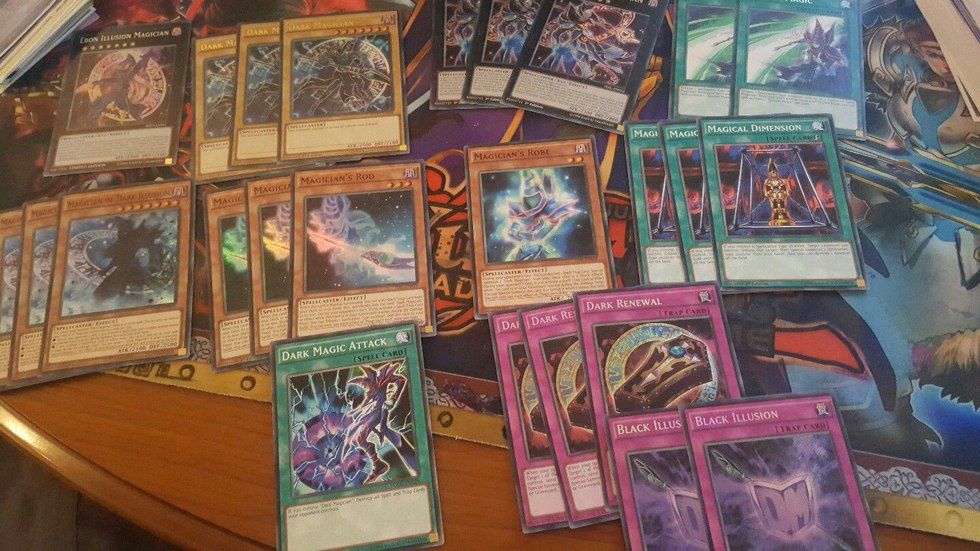A few months ago I began to pick up an old childhood hobby again, playing Yu-Gi-Oh. As a kid I was utterly obsessed, owning a mountain of poorly kept cards that I eventually gave away or threw out because of a lack of interest and the down-casting it caused in the middle and high school years. I had fond memories of pulling the rarest card in a booster set and challenging the best players/duelists on the playground. It was something that connected all the guys at the time and was a blast to play. Not too long ago, when I started the decade of my life most people cherish as their 20s, my younger brother asked if I would play Yu-Gi-Oh with him. He had a deck I gifted him not too long ago but never had anyone to play with, and although I had no interest in picking up the game once more, I eventually gave in and bought a simple deck.
Now, being the obsessive and semi-competitive person that I am, tried to learn more about the game and what tweaks I could make to make the deck of cards I owned more competitive. All that did was hurl me past the casual layer that the game offered and banging my head on a plethora of decks, strategies, expensive cards and rulings I never knew existed. The game changed drastically from what it was when I was a kid. I remembered a simplicity that I child could pick up in a few minutes and found myself confused on how to play with the newer cards in my 20s. Granted, I did learn most of the rules and strategy I had from the anime I watched as a child, which is not the most accurate. Surely, the newer anime delved into the newer types of cards and helped kids learn but it was still surprisingly difficult to catch on to.
With due time I learned the rules and picked up cards I enjoyed using, but I could never imagine playing this properly as a kid. Yu-Gi-Oh is far from a simple kids’ game, at least the newest iteration is. As a kid, the game consisted of five types of cards: Normal/effect monsters, spells, traps, fusion monsters, and ritual monsters. Once I returned they added a few other types: synchro, XYZ, and pendulum cards, all with their own unique set of mechanics. Moreover, the effects and texts of what the card could do were noticeably long and detailed. I am confident that I would have little to no idea how to actually function them as a child, at least not without some sort of help.
Even after learning all the rules, constructing a personal deck that worked efficiently was a monstrous challenge and I often had to refer to Youtube other players’ take on the decks first. To be fair, Konami, the company responsible for producing the cards and regulating the game does provide structure and starter decks for the younger audience and newcomers, often with strategies inside and a direction of what to buy next if you’re interested. These decks are never fully competitive, though, and only manage to be fun with friends that also happen to play very casually. This leads to the next topic: what cards do you buy?
Let it be known that several thousands of unique cards exist in this card game and most are all playable, with a few being banned or of limited use in professional play. The selection is overwhelming and it can be incredibly difficult to know here to go from without having a good understanding of the game and the history of the cards available. No child picking up this game would be able to handle the challenge of selecting all the cards themselves, making the entry point to playing more competitively and creatively significantly more difficult. Even after knowing what to obtain, people run into a whole new realm that they may have known existed in the game: the card price market.
If I had to choose the most staggering and sometimes insurmountable barrier from playing this game the way you would like to play it, it the marketplace to obtain these cards and their prices. While Konami sells and distributes booster packs and tin sets for reasonable prices, it is difficult to get what you need from them since they are almost entirely random from a selection of cards designated for that specific set you bought it from. While many useful cards are common, the one with the most utility, versatility, and potential are rare to obtain. Thus, purchasing single cards from merchants would save players much more time, money and space. While the game encourages trading, not everyone will give you what you want or for a fair trade/price. Thus you must find where to get the cards you want for the lowest amount. Unfortunately for me, I quickly came to realize that I couldn’t even afford some of the valuable cards I needed, some costing $40-60. Some I wasn’t interested in but were very competitive and rate would spike to prices as high as $130 per card.
To be fair, getting the core cards of the deck can be as cheap as 5 cents apiece, but that is not always the case, and it must be considered that at least 40 cards are needed to operate the deck and that’s excluding the 15-card extra deck that is always pricier due to its versatility and usually higher rarities. A functional, somewhat competitive deck can be as cheap as 20-30 dollars, but the ones that compete at the championship level of world tournaments are as pricey as $500. Note that you don’t need to be or have to have the desire to be such a competitive player, but the money barrier is huge for those interested.
To be fair to Konami, their efforts to make cards cheaper by reprinting them later on and the anime is super appealing to kids and even adults alike. They do their best to cater to kids while maintaining the aspects that make Yu-Gi-Oh fun for everyone, whether it be winning a match with a cool monster or pulling a $60 card from a $4 pack. The company has recently pushed the designing and support of older cards to the forefront as well to reel in fans from across all age groups, especially considering that a huge portion of the fanbase is actually in their twenties at this point.
While the card game still has plenty to offer younger audiences, the barriers present and the effort required to fully understand the card game and the meta that exists in it is not something the average kid can overcome. It’s a double-edged sword that makes it more fascinating and complex for older audiences but more challenging to expand the community and scene. If Konami continues with the efforts to reel in old-school players and making valuable cards cheaper, more quickly, I believe a better balance will be found. For now, the card game is still holding strong two decades since its original release and continues to deliver on nostalgia and fun for all fans alike.























